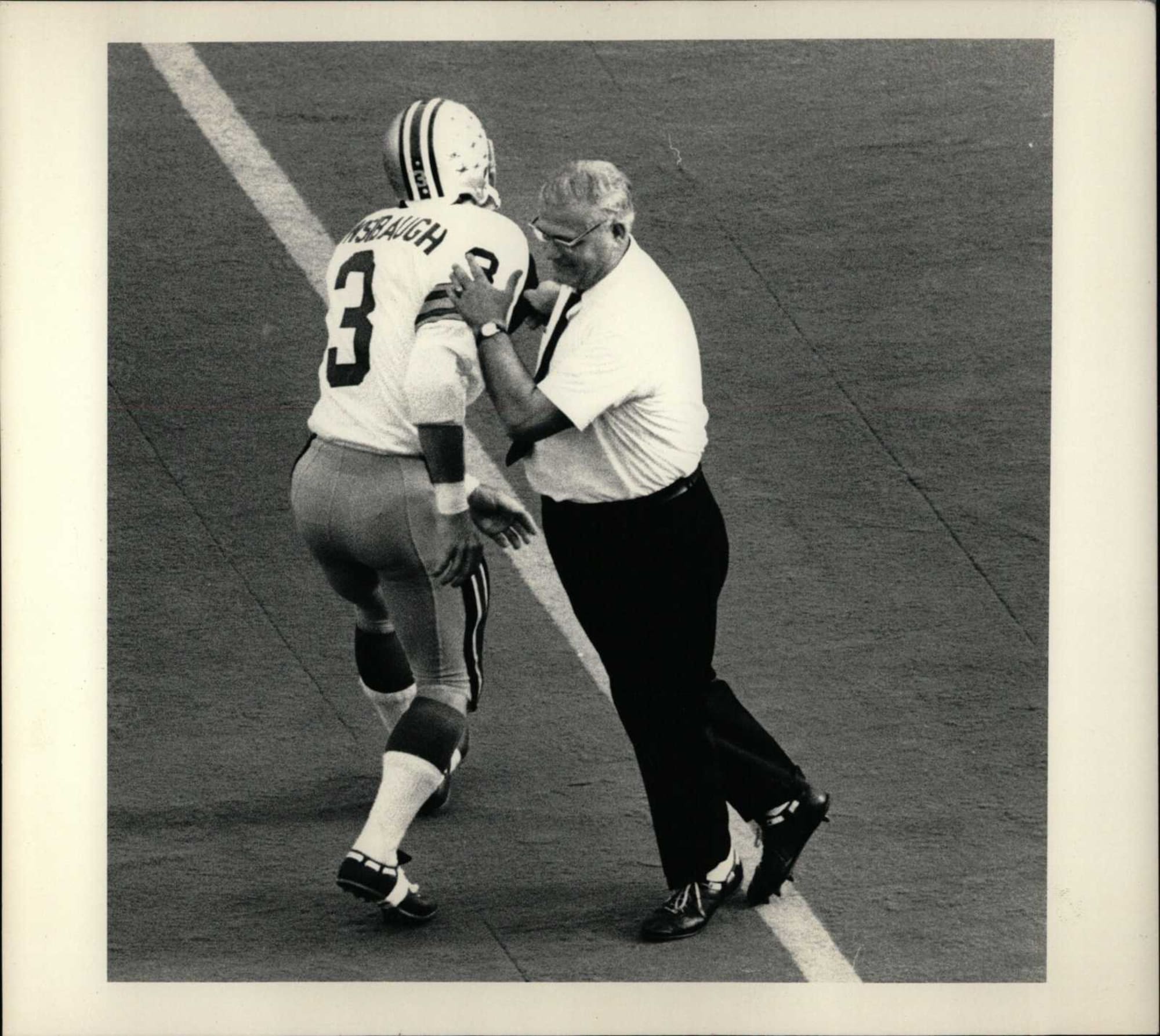
No one is more legendary for the Ohio State football program than Woody Hayes. We take a look back at what he did to make his mark on the university.
It’s late May. We’re just under one hundred days until the Buckeyes play their first game of the 2021 season. For that matter, we’re still two months from practice beginning. So, instead of continually looking forward these next two months, I’m going to take look back every now and then. I can think of no better person to begin a walk down memory lane than Woody Hayes.
Fans and media alike were not exactly enamored with the Ohio State football head coach during the 1967 season. Woody had suffered only his second losing season at the school the previous year. Donations to the athletic department were way down. Fans were not happy. The media was calling for Woody to be axed. He finally relented and made some decisions which not only set the stage for that 1968 national championship season but set up the program for success for years to come.
Improve the way the program recruited. Assistant coach Lou McCullough, who oversaw recruiting and was defensive coordinator in 1966, proposed changes that year to the way they handled recruiting. The two biggest changes he suggested were expanding the recruiting base beyond Ohio for special players and hiring up-and-coming assistant Larry Catuzzi, who had many ties to the east coast.
More from Scarlet and Game
Catuzzi did much of the heavy lifting on New Jersey natives Jack Tatum and Bruce Jankowski, before Woody came in to close those deals. In addition to Tatum and the speedy Jankowski, widening the recruiting area allowed Hayes to bring in tight end Jan White from Harrisburg, Pennsylvania, defensive back Tim Anderson from Follansbee, West Virginia, and John Brockington from Brooklyn, New York.
All contributed to the success of the program over the seasons that followed. Catuzzi had a huge hand in how that 1967 recruiting class, which would eventually become known as the Super Sophs, was put together.
Put better athletes on defense. Much to the frustration of McCullough, Woody kept all of the best athletes for his offense each year. The Ohio State offense was Woody’s pride and joy. He didn’t just want to beat opponents on Saturday, he wanted to beat McCullough’s defense all through the week during practice.
Hayes hoarded good athletes for his offense. Guys who could have provided much-needed help to the defense were never seeing the field on offense. After that 1967 season, Woody finally gave in and struck a deal with McCullough. They’d flip a coin and take turns choosing from the incoming freshman class.
Things went smoothly enough until McCullough swiped Jack Tatum for his defense. The venerable head coach was furious, but the pick stood. Tatum had played fullback as a freshman (first-year players were not eligible to play varsity football at that time) and was very impressive.
Mike Sensibaugh, who would become one of the school’s all-time great defensive backs, said Tatum was the only guy he could never tackle. But, leaving Tatum on defense would set the cornerstone for a championship unit. Take the time to watch the 1969 Rose Bowl between the Buckeyes and USC (watch it here). The payoff of Woody’s decision to put good athletes on defense is very evident. That defense was very fast, physical, and mean.
Implement the I-formation. When Woody recruited Jan White, he also managed to snag his coach, George Chaump. During the winter of 1968, Chaump looked at every piece of game and practice film he could find from the previous season. He realized the freshman class, the greatest the school ever had, was faster and more athletic than the varsity.
Chaump told Woody to start using the I-formation with a wingback in the slot instead of the “Robust T” Hayes loved so much. Woody didn’t like the idea, but the rest of the coaching staff backed the change. By putting a receiver out wide and using motion with the wingback, Chaump knew it would spread the defense and create openings for fullback Jim Otis and tailback Leo Hayden to run through.
It would also allow for the bruising Otis to be used as a lead blocker for Hayden. The move to the I-formation would impact the program for years to come and help produce one day the greatest runner the school has ever known (I’ll let you guess who I’m referring to). But, for 1968, it changed the Ohio State football offense from a good one to a good and dangerous one.
Three changes made by Woody Hayes. Three changes he knew had to be made. Three changes that impacted the program far beyond just 1968.
All of this is chronicled in 1968: The Year That Saved Ohio State Football by David Hyde. This is the best book on Buckeye football I’ve ever read. If you’re looking for a good summer read, this is it. Hyde gives an outstanding look at how the Super Sophs were assembled and Hayes’ coaching style.
"football" - Google News
May 29, 2021 at 11:14PM
https://ift.tt/2RLDIal
Ohio State football: Woody’s decisions that changed everything - Scarlet and Game
"football" - Google News
https://ift.tt/2ST7s35
Shoes Man Tutorial
Pos News Update
Meme Update
Korean Entertainment News
Japan News Update
Bagikan Berita Ini















0 Response to "Ohio State football: Woody’s decisions that changed everything - Scarlet and Game"
Posting Komentar